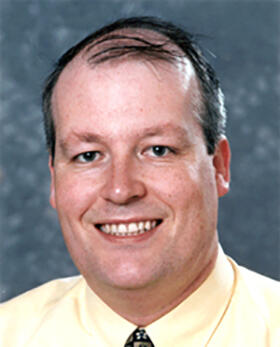
LSTM’s seminar series continued this week with a presentation by Professor Andrew Munro based in the Manchester Institute of Biotechnology at the University of Manchester. His seminar, “Microbial Cytochromes P450: drug targeting in Mycobacterium tuberculosis and biotechnological applications”, was introduced by LSTM’s Dr Mark Paine.
Professor Munro started by looking at the history of tuberculosis, describing how it has been discovered in ancient remains. The majority of people living with the disease today are in sub-Saharan Africa and Asia, but it can be found across the globe. He described what the WHO call the “deadly synergy” between HIV and TB, in some areas of sub-Saharan Africa up to 75% of patients with TB are also HIV positive.
He then went on to look at the current drugs that are being used either singularly or in combination, most which date from the 1940s, 50s and 60s. Given the age of the drugs there has been an inevitable level of resistance, including multi drug resistance, extensive drug resistance and more recently total drug resistance. In terms of extensive and total drug resistant strains, the map looks different, with the majority being based in the several former Russian republics, and spreading through Eastern Europe.
With drug resistance in mind Professor Munro’s team started to look at the P450s that occur in Mycobacterium tuberculosis, (Mtb). Firstly he described a P450, a protein occurring in the bacterium, which is potentially associated with drug metabolism. He went on to illustrate the P450’s catalytic cycle and P450 electron transfer chain. There are a number of different P450s in Mtb, but there is no compelling evidence as to the role of all of them, with the use of less than half of them in Mtb being understood. However, some of the Mtb P450s are essential for cellular viability or infectivity.
Professor Munro’s team have looked at several different P450s in Mtb, isolating some of those that are essential in the disease. These included CYP121 and CYP128, both of which are targets of the azole class of anti-fungal drugs. He discussed the complex relationship of Mtb with cholesterol, with cholesterol seemingly essential for Mtb infection, as well as being used as a carbon source for Mtb.
He described the work that had been undertaken in relation to fragment based drug discovery, building a drug candidate from small fragment molecules and ensuring that it binds strongly to key enzymes. Working with a number of CYPs it is now understood which bind, where they bind, and he went on the describe experiments to produce more potent inhibitors derived from linking/merging fragments found to bind at adjacent sites in the target P450 structures.
Professor Munro concluded by looking at future work that needs to be carried out in order to understand the biochemistry of Mtb P450s so that new and effective drugs can be developed in the continuing fight against Mtb.